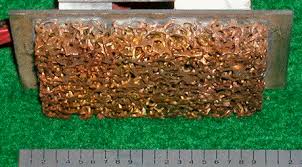The American Academy of Orthopaedic Surgeons (AAOS) Board of Directors adopted the guideline, The Diagnosis and Treatment of Acute Achilles Tendon Rupture: Guideline and Evidence Report, in December which was endorsed by the American Orthopaedic Foot and Ankle Society.
Acute Achilles Tendon Rupture
File Format: PDF/Adobe Acrobat - Quick Viewguideline, The Diagnosis and Treatment of Acute Achilles Tendon Rupture. ... are strongly urged to consult the full guideline and evidence report for this ...
www.aaos.org/Research/guidelines/atrsummary.pdf
Report Title
File Format: PDF/Adobe Acrobat - View as HTML4 Dec 2009 ... THE DIAGNOSIS AND TREATMENT OF ACUTE. ACHILLES TENDON RUPTURE. GUIDELINE AND EVIDENCE REPORT. Adopted by the American Academy of Orthopaedic Surgeons
www.aaos.org/Research/guidelines/atrguideline.pdf

Rated recommendations
The recommendations address: what the physical exam for an acute Achilles tendon rupture should entail; the role of imaging in diagnosing these ruptures; the selection of nonoperative and operative treatments; postoperative care; and information concerning return to sports.
In a three-page summary document, the work group that developed the guideline noted that clinicians should read the full guideline and its evidence report. Only then, based on the circumstances presented by the patient, should orthopedists make treatment decisions for these types of injuries.
The AAOS guideline contains 16 recommendations, each of which is rated according to the strength of its recommendation as moderate, weak or inconclusive. Two of the recommendations are based on consensus among work group members, according to the guideline summary appearing on the organization’s Web site.
Postoperative treatment
The most strongly recommended practices, which appear in recommendations numbered 11 and 12, pertain to postoperative treatment protocols and were ranked as moderate strength. In the 11th recommendation, the group wrote, “We suggest early (less than 2 weeks) postoperative protected weight-bearing for patients with acute Achilles tendon rupture who have been treated operatively.”For the 12th recommendation, they wrote, “We suggest the use of a protective device that allows mobilization by 2 to 4 weeks postoperatively.”
Members of the work group noted in the summary that they were unable to recommend for or against eight practices for acute Achilles tendon ruptures which had inconclusive strength and emphasized that the guideline specifically applies to management of acute Achilles tendon ruptures.

















